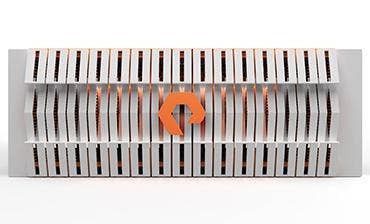Pure Storage Unveils Flash Arrays For Unstructured Data, Intros Sub-$50K All Flash Array

All-flash storage array vendor Pure Storage Monday unveiled a new architecture called FlashBlade designed specifically for unstructured data.
The Mountain View, Calif.-based storage vendor also unveiled its first entry-level all-flash storage array priced at less than $50,000, and is expanding its FlashStack converged infrastructure solution set.
The new solutions, which were introduced Monday prior to the opening of the Pure Storage Pure//Accelerate 2016 conference, are all about expanding the flash storage market, said Matt Kixmoeller, vice president of products for the vendor.
[Related: Q&A: Pure Storage CEO Dietzen Talks About NetApp/SolidFire, Flash Storage Future]
"To date, the focus on all-flash arrays has been in larger data centers for virtual machines and high-performance applications," Kixmoeller told CRN. "We want to bring it downmarket and bridge it to the realm of unstructured data."
The Pure Storage FlashBlade is a combination of high-performance all-flash storage and the software needed for cloud-scalable, unstructured data platforms, Kixmoeller said.
FlashBlade scales to a total of 1.6 Petabytes in a 4U form factor with 10-GBps performance, he said. Customers can choose either 8-TB or 52-TB blades, and mix and match in the chassis, he said. Using 52-TB blades for maximum capacity, the price-per-usable GB comes down to less than $1. The performance comes from the integrated low-latency, 40-Gbps software-defined networking.
On the software side, the Pure Storage FlashBlade includes a scalable solution for supporting NFS and Amazon S3 object storage data, with CIFS support coming in the future, Kixmoeller said. "It's a full-on storage software stack," he said.
The Pure Storage FlashBlade scales out for unstructured data with a balance of performance and economy, including the use of raw flash instead of SSDs to simplify the hardware, he said. But it does so in an efficient manner, using only 1,300 Watts per Petabyte.
The Pure Storage FlashBlade is currently in limited availability via the company's early access program, with direct availability slated to start in the second half of 2016.
The Pure Storage FlashBlade will create a lot of interest and open up markets where the vendor currently does not play, said John Woodall, vice president of engineering at Integrated Archive Systems (IAS), a Palo Alto, Calif.-based solution provider and Pure Storage partner.
"This means new opportunities for us," IAS' Woodall told CRN, "Pure's performance and density will be a game-changer for unstructured data."
Chris Case, president of Sequel Data Systems, an Austin, Texas-based solution provider and Pure Storage channel partner, told CRN the FlashBlade will be a good solution for competing against NetApp clustered storage and EMC Isilon.
"Of the tens of millions of dollars worth of storage we sell, only a small percentage so far is for unstructured data," Case said. "We will be looking at how this fits with our market. We have customers doing video, which typically doesn't need the high performance. But we're also seeing a lot of analytics with customers using Splunk and Hadoop where unstructured data plays a role."
Pure Storage is also looking at building a market in the entry-level flash storage business with the introduction of its new FlashArray//m10, which is available in either 5-TB or 10-TB raw capacity configurations, Kixmoeller said. With compression and deduplication, usable capacity is 15 TB or 30 TB, he said.
Pricing starts at less than $50,000, including a full year of support, for the 5-TB model. However, with Pure Storage's Evergreen Storage program, customers can upgrade the FlashArray//m10 to larger models.
"We're lowering the price barrier to let more customers dive into the world of all-flash arrays," he said.
The FlashArray//m10 opens up a lot of new opportunities, Case said.
"The lower price is important," he said. "The performance of flash storage is often more than SMBs really need. But when you add compression and other capabilities, you open the door for all customers to consider all-flash arrays with an enterprise-class chassis. There are other low-cost all-flash solutions, but they haven't been enterprise-class."
Woodall said that the ability to upgrade the FlashArray//m10 to higher-end models as customers grow will be a good conversation starter.
Pure Storage also expanded its FlashStack line of converged infrastructure solutions, built in conjunction with Cisco's UCS and VMware's virtualization technology, with a couple of new configurations, Kixmoeller said.
They include new solutions architected for SAP HANA and Microsoft SQL, as well as a new Cisco Validated Design for virtual desktop infrastructures of up to 5,000 seats. The company also introduced FlashStack Mini for VMware and Hyper-V environments based on the FlashArray//m10 and the Cisco UCS Mini entry-level UCS solution.
The FlashStack Mini, in conjunction with the Cisco UCS Mini, will help bring more customers into the converged infrastructure conversation, IAS' Woodall said. "This opens the door for converged infrastructure business in customers who wouldn't consider it before," he said.